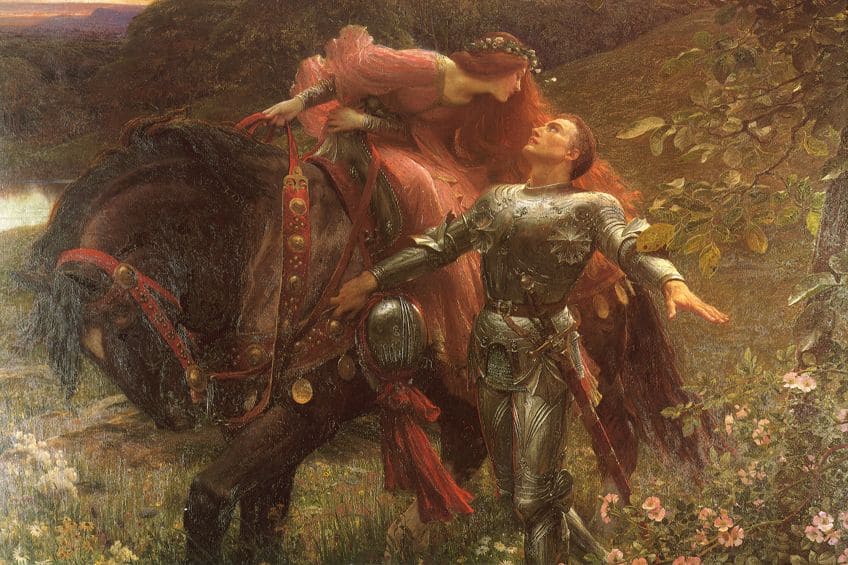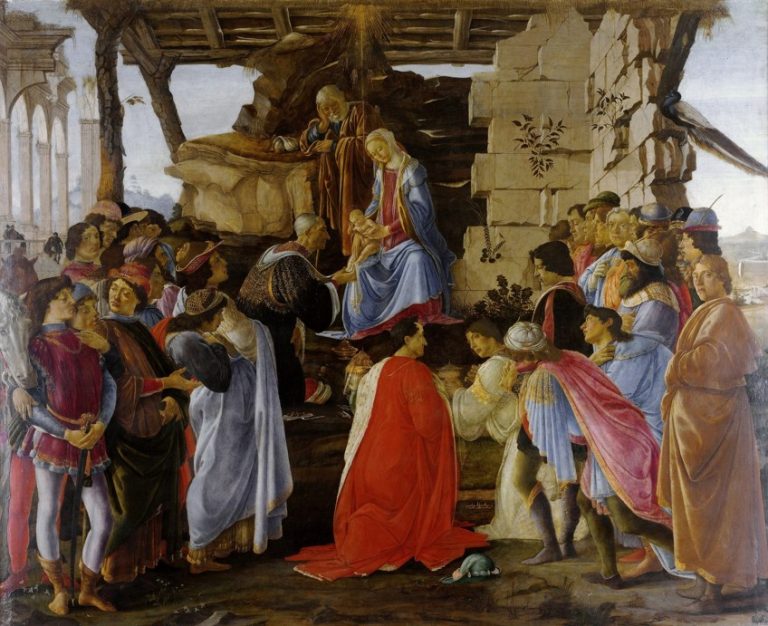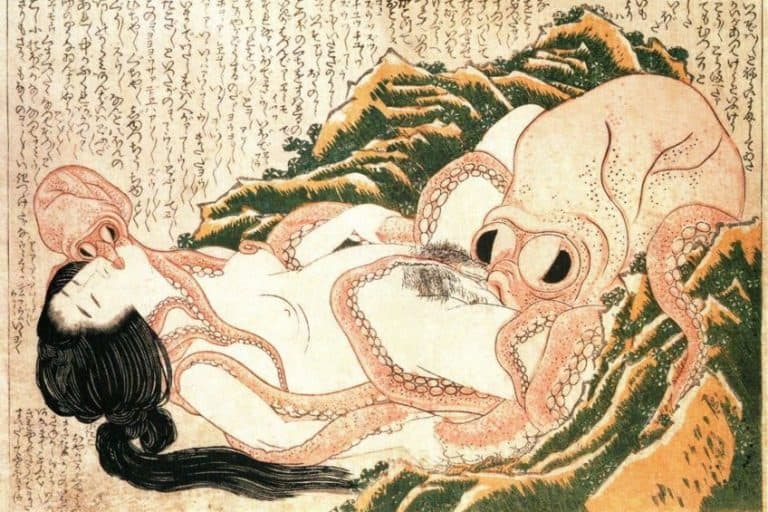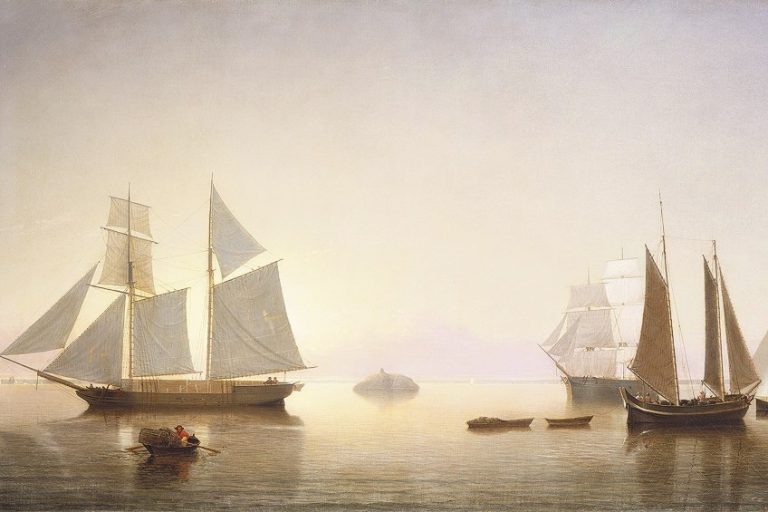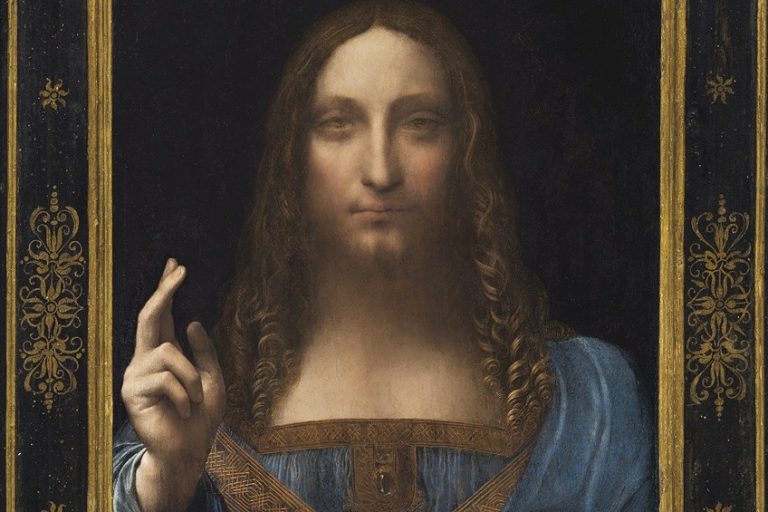“La Belle Dame sans Merci” by Frank Bernard Dicksee – Analysis
La Belle Dame sans Merci by Frank Bernard Dicksee encapsulates the romantic narrative inspired by John Keats’ poem. Completed in 1901, this masterpiece exemplifies Dicksee’s Romantic style, portraying the tragic allure of a knight ensnared by an enchanting lady. Through meticulous detail and rich symbolism, the painting evokes themes of love, desire, and mortality, inviting exploration of human emotion and beauty’s transience. The following article will conduct a brief analysis of the artwork, exploring its themes, symbolism, and artistic techniques.
Key Takeaways
- La Belle Dame sans Merci by Frank Dicksee is an oil on canvas that brings John Keats’ poem to life through visual art.
- The painting reflects the historical enchantment with medieval romance and its often complex, nuanced portrayal in Victorian England.
- Dicksee’s composition combines detailed rendering with emotive storytelling, indicating the continued influence of the Pre-Raphaelite approach to art.
Historical Context
| Artist | Frank Bernard Dicksee (1853 – 1928) |
| Date Created | 1901 |
| Medium | Oil on canvas |
| Genre | Romanticism |
| Period/Movement | 19th-century British art |
| Dimensions (cm) | 137.2 x 188 |
| Series/Versions | N/A |
| Where Is It Housed? | Bristol Museum and Art Gallery, Bristol, England |
| What It Is Worth | Priceless |
La Belle Dame sans Merci is an artwork by Sir Frank Bernard Dicksee that resonates with the dramatic intensity of literary adaptation in visual form. Created in 1901, this oil on canvas encapsulates the haunting essence of the eponymous poem by John Keats, rendering it a vivid, tangible experience for the viewer. The artwork is a brilliant example of how the Pre-Raphaelite movement.
This movement is known for its vivid detail, complex compositions, and lush colors, continued to influence artists into the Victorian era, with Dicksee being a prominent figure who bridged both worlds through his work.
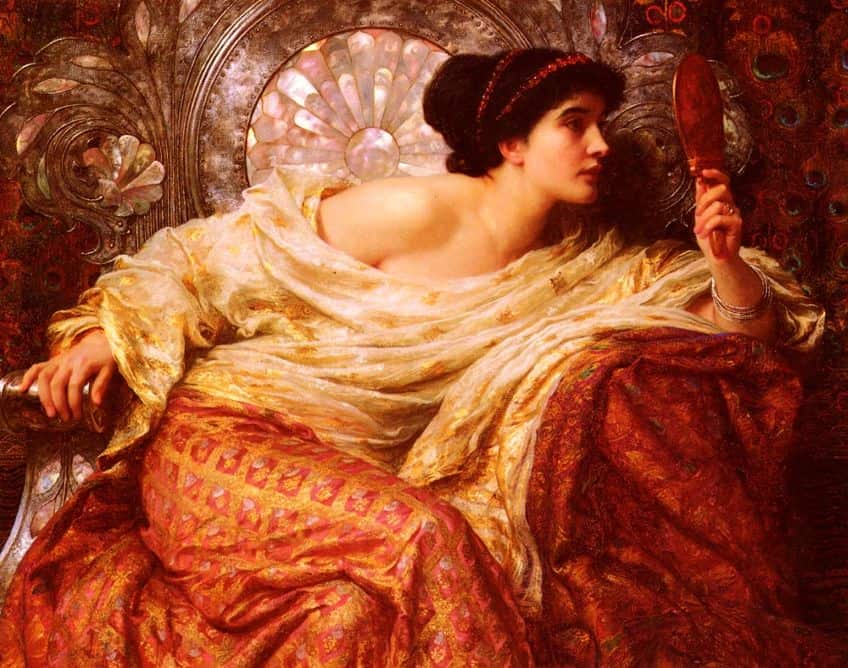
Inspiration from Keats
Sir Frank Dicksee’s painting is directly inspired by John Keats’s poem, La Belle Dame sans Merci, penned in 1819. This literary source material is a poignant narrative of love, beauty, and despair, which Dicksee translates into a visual format. The British painter illustrates a moment of intense emotion, reflecting the Pre-Raphaelite interest in themes of unrequited love and the supernatural.
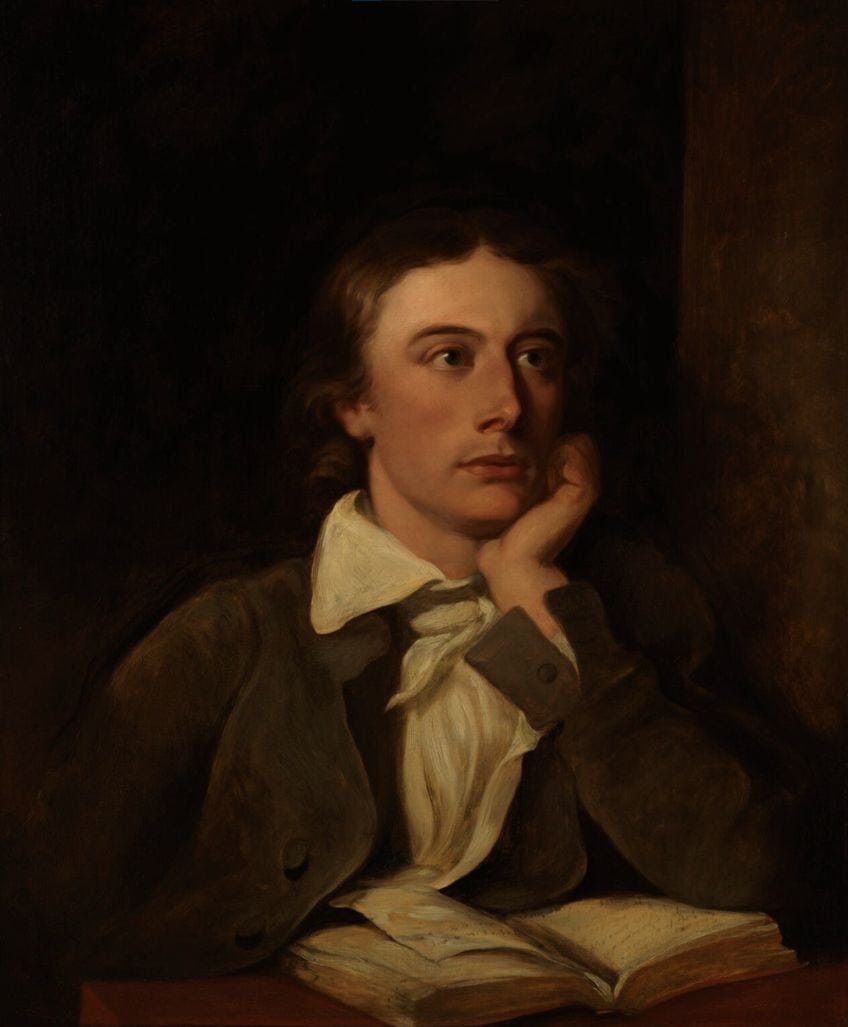
Cultural Significance
Frank Dicksee was a prominent Victorian painter, and his work often included portrayals of fashionable women as well as dramatic, literary scenes. In the context of British culture, La Belle Dame sans Merci stands out as an example of the era’s fascination with medievalism and mythology. The painting adds a visual layer to Keats’s narrative, and through Dicksee’s skilled brushwork, it became a part of the broader tapestry of British art history. This masterpiece is significant not only for its aesthetic beauty but also for the conversation it ignites about the Romantic era’s cultural values and ideals.
Through this painting, Dicksee contributes to preserving the artistic and cultural heritage of Britain, solidifying his reputation as a master British painter.
Formal Analysis
This section provides a detailed formal analysis of Frank Bernard Dicksee’s painting La Belle Dame sans Merci, focusing on its subject matter, use of color, spatial composition, and texture.

Subject Matter
La Belle Dame sans Merci, an oil on canvas painting, depicts a moment of romantic escapism driven by the themes of chivalry and fantastical charm. The knight, ensnared by the otherworldly allure of a femme fatale, experiences both enchantment and trepidation.
In doing so, he is hinting at the underlying narrative of love and demise from Keats’ poem.

Color
Dicksee’s palette consists of vibrant colours that enhance the emotional depth of the scene. Rich, warm hues envelop the knight and the enigmatic “belle dame,” while cooler tones in the background create a stark contrast, emphasizing the separation between the mortal world and the supernatural realm. The knight features earthy greens and browns, symbolizing his connection to the mortal world.
The lady or demon has pale skin and ethereal garments imbued with soft greens and golds, signifying otherworldliness.
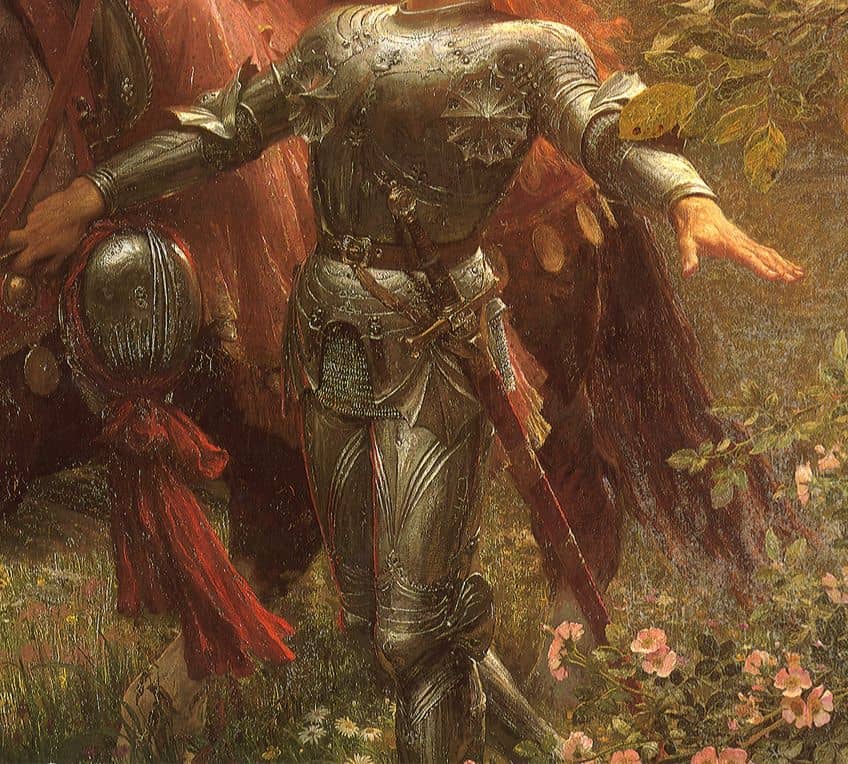
Space
The spatial arrangement in La Belle Dame sans Merci is meticulously crafted. In the foreground, the knight and the “belle dame” are prominently positioned, highlighting their central roles in the narrative. Meanwhile, the background offers a less defined, dreamlike backdrop, creating a feeling of infinite space.
This intensifies the romantic escapism portrayed in the scene.
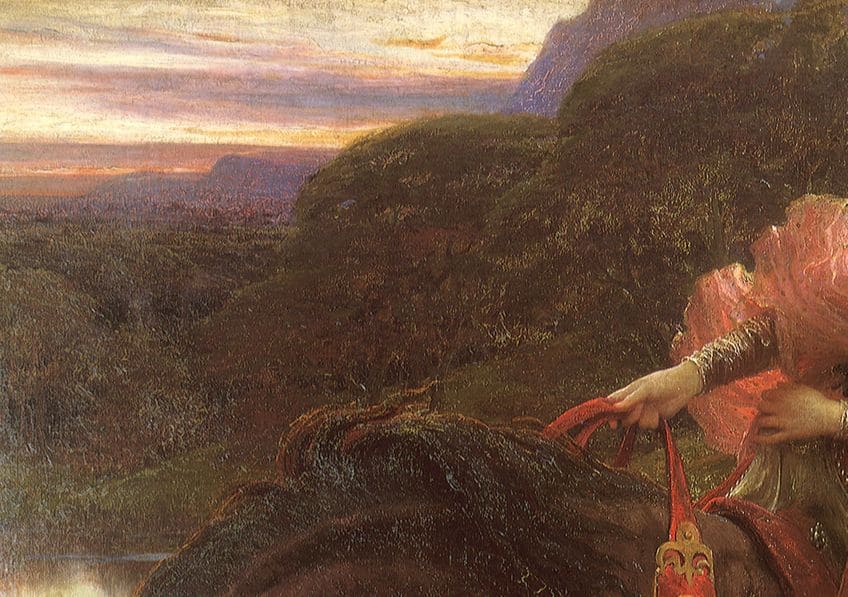
Texture
The texture of the painting plays a significant role in enhancing its lifelike appearance and emotional impact. In the portrayal of the figures, the smooth and almost sublime textures of the lady and the knight stand out, creating a stark tactile contrast against their surroundings. Meanwhile, the environment benefits from a rich impasto technique, lending the foliage and natural elements a tangible roughness that firmly grounds the scene in reality.
Together, these contrasting textures contribute to the depth and resonance of the artwork.

Current Status
Frank Bernard Dicksee’s artwork La Belle Dame sans Merci resides within the public sphere, exempt from copyright, while its legacy continues to resonate today. Ownership of the artwork resides with the Bristol Museum and Art Gallery, located in Bristol, England, United Kingdom. The piece was gifted to the institution by Mrs. Yda Richardson. As for its copyright status, the artwork is in the public domain.
This status has been achieved because the copyright term has expired due to its age, allowing it to be freely accessible and utilized by the public without restriction.
La Belle Dame sans Merci was crafted by Frank Bernard Dicksee who lived from 1853 to 1928, with the artwork itself being exhibited in 1902. As the copyright term is the life of the creator plus a certain number of years, which varies by jurisdiction but is typically 70 years, this work is now in the public domain, meaning it is free from copyright restrictions.
Legacy in the Modern Era
La Belle Dame sans Merci endures as a significant and accessible piece, with the Bristol Museum and Art Gallery facilitating its physical preservation and virtual access through various platforms. Public accessibility is ensured through both the museum’s exhibitions and online presence, with Art UK offering digital representation. As the artwork is in the public domain, no licensing is required for its display or reproduction. This enduring accessibility serves as a testament to the cultural heritage of the United Kingdom, allowing for continued appreciation and study of this timeless piece.
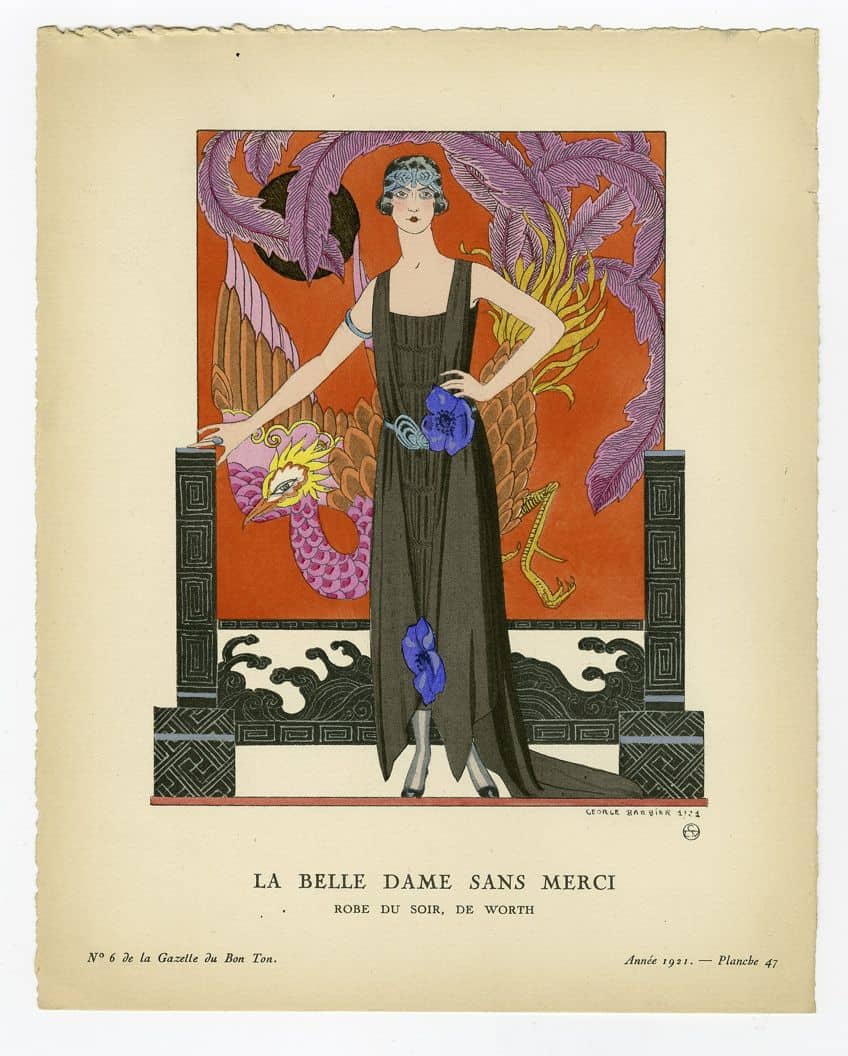
La Belle Dame sans Merci by Frank Bernard Dicksee epitomizes the enduring allure of romanticism and the intricacies of human emotion. Dicksee’s adept use of symbolism and composition draws viewers into a world of chivalry and longing, prompting reflection on themes of desire, sacrifice, and the ephemeral nature of beauty. This masterpiece continues to mesmerize audiences, serving as a poignant reminder of art’s capacity to evoke deep emotions and inspire contemplation.
Frequently Asked Questions
What Is the Main Message Conveyed in La Belle Dame sans Merci?
The main message conveyed in Frank Bernard Dicksee’s painting revolves around the themes of love, seduction, and the supernatural. The artwork captures the interaction between the knight and the mystical woman, reflecting the Romantic fascination with medieval chivalry and tragic beauty.
How Is the Theme of Tragedy Explored in La Belle Dame sans Merci?
In La Belle Dame sans Merci, the theme of tragedy is explored through the depiction of the knight’s encounter with the femme fatale. Dicksee’s painting does not show the dark aftermath of the poem but rather focuses on the moment of seductive enchantment, implying the subsequent sorrow and desolation that befall the knight.
Isabella studied at the University of Cape Town in South Africa and graduated with a Bachelor of Arts majoring in English Literature & Language and Psychology. Throughout her undergraduate years, she took Art History as an additional subject and absolutely loved it. Building on from her art history knowledge that began in high school, art has always been a particular area of fascination for her. From learning about artworks previously unknown to her, or sharpening her existing understanding of specific works, the ability to continue learning within this interesting sphere excites her greatly.
Her focal points of interest in art history encompass profiling specific artists and art movements, as it is these areas where she is able to really dig deep into the rich narrative of the art world. Additionally, she particularly enjoys exploring the different artistic styles of the 20th century, as well as the important impact that female artists have had on the development of art history.
Learn more about Isabella Meyer and the Art in Context Team.
Cite this Article
Isabella, Meyer, ““La Belle Dame sans Merci” by Frank Bernard Dicksee – Analysis.” Art in Context. February 13, 2024. URL: https://artincontext.org/la-belle-dame-sans-merci-by-frank-bernard-dicksee/
Meyer, I. (2024, 13 February). “La Belle Dame sans Merci” by Frank Bernard Dicksee – Analysis. Art in Context. https://artincontext.org/la-belle-dame-sans-merci-by-frank-bernard-dicksee/
Meyer, Isabella. ““La Belle Dame sans Merci” by Frank Bernard Dicksee – Analysis.” Art in Context, February 13, 2024. https://artincontext.org/la-belle-dame-sans-merci-by-frank-bernard-dicksee/.


